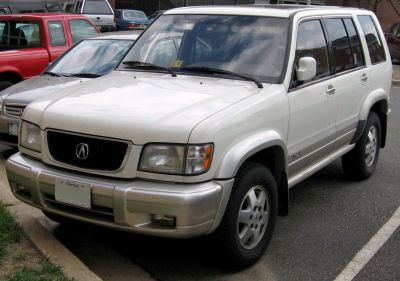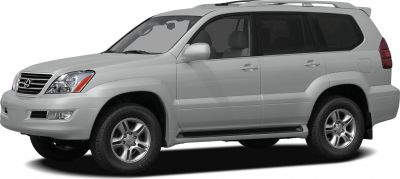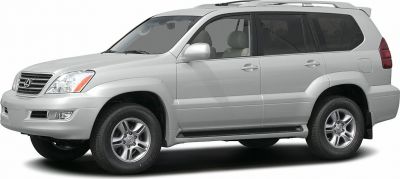 1990 Toyota Land Cruiser (J80) Dimensions, Size & Specs
1990 Toyota Land Cruiser (J80) Dimensions, Size & SpecsMeasurements of the 1990 Toyota Land Cruiser, engineered for optimal performance and comfort
| Dimensions | |
|---|---|
| Length: | 4780-4820 mm188.2-189.8 in15.7-15.8 ft |
| Width: | 1830-1930 mm72.0-76.0 in6.0-6.3 ft |
| Height: | 1850-1900 mm72.8-74.8 in6.1-6.2 ft |
| Ground Clearance: | 210-220 mm8.3-8.7 in0.7-0.7 ft |
| Trunk Capacity: | 830-832 liter29.3-29.4 cu ft |
| Trunk Capacity (Max): | 1368-1370 liter48.3-48.4 cu ft |
| Weight Specifications | |
| Curb Weight: | 2200-2410 kg4850-5313 lbs |
| Maximal permitted Weight: | 2670-3060 kg5886-6746 lbs |
| Roof Load: | 200 kg441 lbs |
| Tire Specifications | |
| Rims Sizes: | 15-inch rims:
|
| Tire Sizes: |
|
The Toyota Land Cruiser J80, produced between 1990 and 1996, is a robust and versatile full-size SUV that combines off-road prowess with comfortable dimensions suitable for both urban and rugged environments. Measuring between 4780 and 4820 millimeters (188.2 to 189.8 inches) in length, this generation of the Land Cruiser maintains a substantial road presence without being overly cumbersome. Its width ranges from 1830 to 1930 millimeters (72.0 to 75.9 inches), offering ample interior space while enhancing stability. The height sits between 1850 and 1900 millimeters (72.8 to 74.8 inches), contributing to a commanding driving position and generous headroom for passengers. Curb weight of the J80 spans from 2200 to 2410 kilograms (4850 to 5314 pounds), reflecting its solid build and the heavy-duty components designed to endure challenging terrains. Maximum vehicle weight ranges from 2670 up to 3060 kilograms (5888 to 6749 pounds), accommodating occupants, cargo, and additional equipment. One of the standout features is its expansive luggage capacity which measures approximately 830 to 832 liters (29.3 to 29.4 cubic feet) with all seats in place. When the rear seats are folded down, this volume increases significantly to between 1368 and 1370 liters (48.3 to 48.4 cubic feet), providing versatile storage options for long trips or heavy cargo. The vehicle also supports a roof load capacity of up to 200 kilograms (441 pounds), perfect for additional gear such as roof racks or storage boxes. Ground clearance, a critical factor for off-road capability, ranges from 210 to 220 millimeters (8.3 to 8.7 inches), ensuring the Land Cruiser J80 can confidently tackle uneven terrain and obstacles. It rides on rims sized between 7J x 15 and 8J x 16, paired with tires of sizes including 265/75 R15 and 275/70 R16, all contributing to its rugged appearance and terrain adaptability. As a legendary SUV, the Toyota Land Cruiser J80 blends substantial size and enduring performance, making it a preferred choice for enthusiasts demanding reliability and versatility in both urban and off-road settings.
Discover the standout features that make the 1990 Toyota Land Cruiser a leader in its class
Have a question? Please check our knowledgebase first.
The Toyota Land Cruiser J80, produced from 1990 to 1996, has a length ranging between 4780 mm and 4820 mm. This translates to approximately 188.2 to 189.8 inches (or about 15.68 to 15.82 feet). These dimensions highlight the vehicle's substantial size, making it a robust SUV designed for both on-road comfort and off-road capability. The length accommodates spacious interior seating arrangements and ample cargo space, suitable for various transportation needs and adventures.
The width of the Toyota Land Cruiser J80 varies between 1830 mm and 1930 mm. In imperial units, this is approximately 72.0 to 75.98 inches (about 6 feet to 6.33 feet). This width contributes to the vehicle's stable handling and generous interior cabin space, enhancing passenger comfort. The variation in width depends on specific model trims or wheel configurations, including the standard and wider versions with different rims and tires.
The height of the Toyota Land Cruiser J80 ranges from 1850 mm to 1900 mm, which is roughly 72.83 to 74.8 inches, or about 6.07 to 6.23 feet tall. This elevated height supports the SUV's commanding road presence and contributes to its impressive ground clearance, enabling better off-road ability. The height also allows for a comfortable seating position, good visibility, and sufficient headroom inside the cabin for passengers.
The curb weight of the Land Cruiser J80 ranges from 2200 kg to 2410 kg (approximately 4850 to 5315 pounds). This relatively heavy weight reflects its rugged construction, solid frame, and off-road capabilities. The weight affects fuel efficiency somewhat but contributes to its durability, stability, and ability to handle rough terrain and heavy loads. The strong build ensures safety and reliability for a variety of driving conditions, from city roads to challenging off-road trails.
The maximum weight or gross vehicle weight of the Land Cruiser J80 varies between 2670 kg and 3060 kg, which is about 5889 to 6748 pounds. This maximum weight includes the curb weight plus cargo and passengers. The robust payload capacity makes the vehicle suitable for carrying heavy equipment and multiple passengers. This capability is particularly valuable in off-road, expedition, or towing scenarios where additional gear or trailers are involved, enhancing the SUV's versatility and reliability in demanding conditions.
The Toyota Land Cruiser J80 offers a luggage capacity of about 830 to 832 liters (approximately 29.3 to 29.4 cubic feet) with the rear seats up. When the rear seats are folded down, the capacity expands significantly to about 1368 to 1370 liters, which translates to roughly 48.3 to 48.4 cubic feet. This flexibility allows the SUV to carry ample cargo for long trips or off-road excursions, balancing passenger comfort with storage space for various needs.
Yes, the Toyota Land Cruiser J80 is equipped with a ground clearance ranging from 210 mm to 220 mm (approximately 8.27 to 8.66 inches). This ride height is sufficient to handle a variety of rough terrains, including rocks, ruts, and uneven surfaces, making it a capable off-road vehicle. The high ground clearance helps protect the undercarriage from damage and allows for better approach and departure angles, essential for serious off-roading and outdoor adventures.
A standard residential garage typically measures around 2.4 to 3 meters in width (7.87 to 9.84 feet), 4.8 to 6 meters in length (15.75 to 19.69 feet), and 2.1 to 2.4 meters in height (6.89 to 7.87 feet). The Land Cruiser J80's length of about 4.78 to 4.82 meters (15.68 to 15.82 feet) fits comfortably in most standard garage lengths. Its width of 1.83 to 1.93 meters (6.0 to 6.33 feet) also allows for adequate clearance in average garage widths. The height, ranging from 1.85 to 1.9 meters (6.07 to 6.23 feet), is well within typical garage door height limits. Therefore, in most cases, the Land Cruiser J80 will fit inside a standard garage space, but owners should verify their specific garage dimensions for optimal ease of parking.
Compared to its predecessor, the Toyota Land Cruiser J70 series, the J80 generation is generally larger and more refined in terms of dimensions and interior comfort. The J70 typically had a more utilitarian and boxy shape with shorter length and narrower width, whereas the J80 measures about 4780-4820 mm in length and 1830-1930 mm in width, offering more passenger space and cargo room. The J80 also improved ride comfort and safety while maintaining off-road prowess. These enhancements made the J80 better suited for users seeking a blend of rugged capability with more luxury and everyday usability compared to the more spartan J70.
The Toyota Land Cruiser J80 stands out among 1990s SUVs for its substantial size and superior off-road capability. Compared to contemporaries like the Land Rover Defender or Jeep Cherokee, the J80 is generally longer and wider, offering more interior space and cargo capacity. Its ground clearance, durability, and robust drivetrain made it a preferred choice for serious off-road enthusiasts and expedition drivers. While some competitors emphasized luxury or on-road refinement, the J80 balanced ruggedness with comfort, making it a versatile and dependable SUV of its era.
Discover similar sized cars.

| Production: | 1996-1999 |
|---|---|
| Model Year: | 1996 |
| Length: | 4720-4740 mm185.8-186.6 in |
| Width: | 1750-1835 mm68.9-72.2 in |
| Height: | 1840 mm72.4 in |

| Production: | 2007-2009 |
|---|---|
| Model Year: | 2007 |
| Length: | 4780 mm188.2 in |
| Width: | 1880 mm74.0 in |
| Height: | 1895 mm74.6 in |

| Production: | 2002-2007 |
|---|---|
| Model Year: | 2002 |
| Length: | 4780 mm188.2 in |
| Width: | 1880 mm74.0 in |
| Height: | 1895 mm74.6 in |
